Detailed map of the region West of the Rocky Mountains and including the Upper Missouri River.
Flemming's map of the West is on of the best maps of the region to appear in a European Commercial Atlas in the years immediately after the Mexican War. Flemming uses as a base for his map the recent discoveries and reports of Col. Fremont, weaving together a fine tapestry of early information in the same year that the discovery of Gold in California fueled Gold Fever and the first major Westward migration.
The map includes a number of early Western Forts, the location of numerous Indian Tribes (including a few such as the Genigueches, Coninas, Yeppe Cataca, Molele and Punashy, to name a few, which rarely appear on printed maps), and many other interesting geographical and topographical features. There is very nice coverage in Oregon Territory, extending to Ft. Union on the Missouri and showing, the Oregon Trail from Laramie to Astoria via the South Pass, 3 Tetons and Jackson Lake, Spokan Haus and many other early forts, settlements and other features.
In California the Northern Regions beyond Walker's Pass include detailed, although somewhat inaccurate topographical details, but area East of the San Bernardino Mountains in San Bernardino County are still virtually unexplored, with even the route of the Mojave River shown as largely conjectural. This vast unexplored region continues into the Western part of New Mexico Territory (present day Arizona) where the Eastern branch of the Colorado River is almost a complete mystery. The limited knowledge of this area, which includes the Grand Canyon, is somewhat remarkable, given that it was visited as early as 1540 by a party led by Garcia Lopez de Cardenas, in connection with Coronado's search for the 7 Cities of Cibola and again by Jesuit Missionaries in the middle of the 18th Century. The desert is traversed by roads leading from Salt Lake to the San Bernardino Mountains (the Mormon Trail) and a second route from San Bernardino to Albuquerque. A third road from San Diego to the Rio Grande, which runs south of the course of the Gila River, is shown, crossing throubh Tucson at its southern most point. The map erroneously extends the border of Mexico and California a good 20 to 30 miles south of its true position, reaching Cabo San Miguel at its western terminus in the Pacific Ocean.
To the east, many Colorado mountains identified. and the region on both sides of the Rocky Mountains and the Upper Rio Grande River Valley reflect the active exploration and settlement in the region by Spanish, Mexican and American interests over the region's 300 year history.
Sign In
The item illustrated and described below is sold, but we
have another example in stock. To view the example which
is currently being offered for sale, click the
"View Details" button below.
Stock# 14456
Description
Condition Description
Trimmed to the left margin, with a bit of loss to the neatline toward the bottom, but generally a nice example.

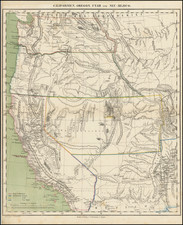








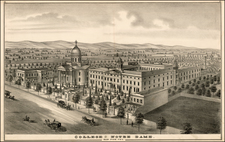
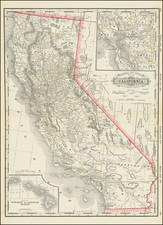
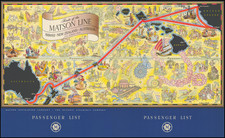
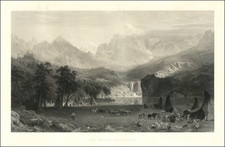
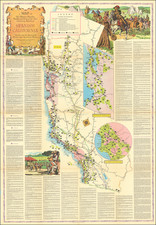
![[ Southwest & Texas ] Le Nouveau Mexique, Avec La Partie Septentrionale De L'Ancien, ou De La Nouvelle Espagne](https://storage.googleapis.com/raremaps/img/small/99395.jpg)